Which D&D 5e Book Should You Buy?
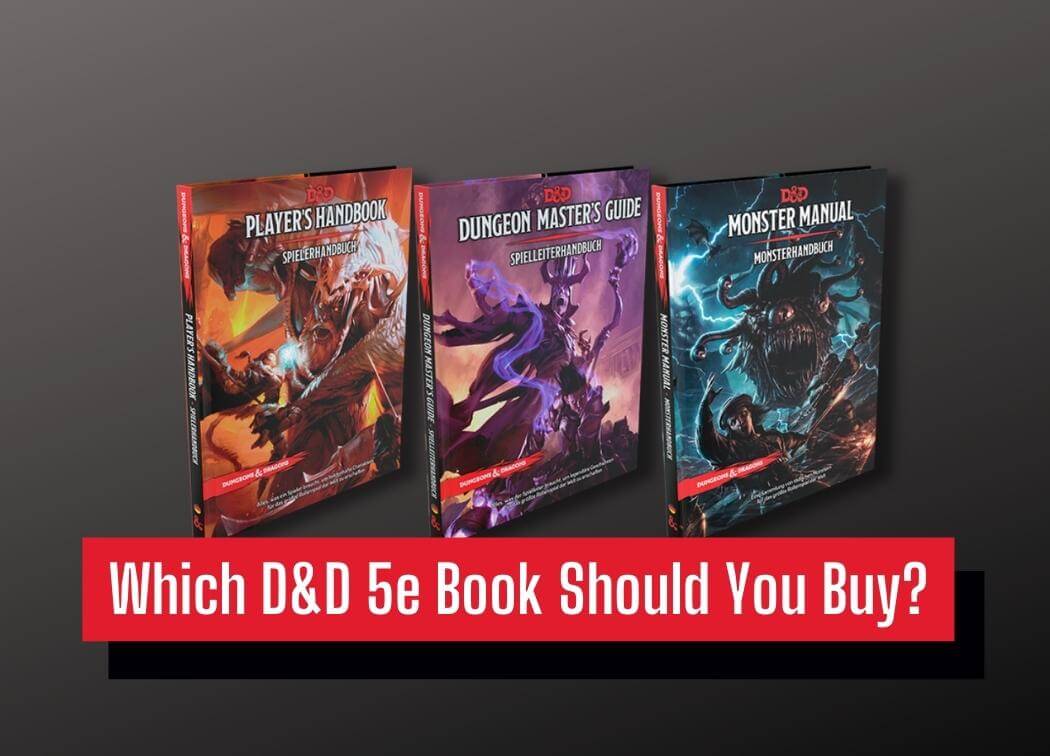
The Dungeons and Dragons 5e core books, the Player’s Handbook, the Monster Manual, and the Dungeon Masters Guide have been out for almost 4 years now. Since the release of 5e, Wizards of the Coast has released 16 total books with 2 more on the way this year.
That’s a lot of books. They all cost about $30-$60 each. That’s expensive for a new player or DM! So, what D&D 5e book should I buy? Are there any “must-have” book(s) to play?
The Problem
I’m going to tackle this problem by suggesting that there is a certain order in which I believe these books are best to be purchased. In this post, I have separated the books into 5 Tiers. Start with Tier 1 and purchase the books that interest you. From there move down to the next section the next time you want to buy a new book.
I’ve personally used this system to recommend books to my friends and it has worked out well for veteran players, new players, dungeon masters, and everyone in-between!
Tier 1 – Must-Have
There is only a single D&D 5e book in the “Must Have” tier. This book will provide all the information needed to DM or play in a D&D 5e campaign.
Player’s Handbook
The Player’s Handbook contains all of the basic rules, character options, equipment, and spells in the game. As a player or a full-time DM, this is an absolute staple. Obviously for players having access to the rules, classes, feats, equipment, spells, races, and backgrounds makes this book an obvious choice.
A DM could run a game using only the Player’s Handbook and some monster stat blocks they found on the internet. This book is a reference for everyone at the table. Trust me, regardless of your role at the table you will look through this book at least a couple of times a session. Buy this book before you purchase any other book in the collection.
Tier 2 – Cornerstones
The “Cornerstones” tier includes two books. I do not deem both of these books necessary for both DMs and Players to own. However, they are the books I frequently use as both a DM and a player.
Monster Manual
As a DM the Monster Manual is your best friend. This holds a few hundred monsters for you to throw at your unsuspecting adventurers. I constantly have this book open and bookmarked whenever I am running a session. The variety of monsters is particularly good. I have been able to regularly surprise my players with monsters they have never encountered in over 3 years of playing D&D 5e.
As a player, this book is a pass. If you have no intention of ever DMing I would not recommend picking this book up. That being said you should give DMing a try anyway, you may like it more than you’d think!
Xanathar’s Guide to Everything
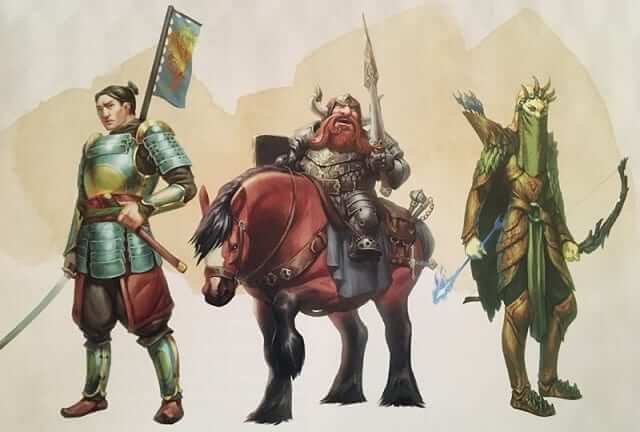
Xanathar’s Guide to Everything is by far my favorite D&D 5e book. There’s just so much content for everyone at the table packed into it!
Each class got new archetypes, most of which are unique to Xanathar’s Guide to Everything though there are a few reprints from Sword Coast Adventurer’s Guide in there. There are also new racial feats that your character can pick up. Tons of new spells were also added, including ones that require INT Saving Throws!
It also added so many awesome tables and tools for DMs. Some tables explain how to distribute magical items to players, all the official Druid wild shape forms, traps, and more. We also get some more insight into how crafting mechanics work, though there isn’t a ton there still.
Seriously, XGtE is practically a second Player’s Handbook with how much content it holds. It is worth the money as a player and has a ton of great tools for DMs. Both camps would benefit by adding XGtE to their collection.
Tier 3 – Expansions
“Expansions” books are great books. They expand the content of the game and fill in some areas the books of the first 2 tiers only touch upon. They require at least the Player’s Handbook and/or the Monster manual to use them to their fullest potential.
Volo’s Guide to Monsters
I had originally placed Volo’s Guide to Monsters in Tier 2. However, after some thought, I decided against that. It has a lot of content such as new character races, monster lore, and plenty of new monsters for DMs to use, but it’s nowhere near as chock-full of useful content as XGtE or the MM.
Many of these new creatures include new versions of creatures in the MM such as the Flind which is a high CR gnoll. I have used many of the creatures in my games. There are a lot of more unique takes on creatures in VGtM and they can make for a fun twist on a creature your players are accustomed to.
The player races are very unique and fun, but that’s all that is in there for players, unfortunately. That being said, there are quite a few unique races and it adds quite a few monstrous races such as goblins and kenku.
VGtM is an excellent D&D 5e book for DMs, but one I would put lower on my list if I were a full-time player.
Mordenkainen’s Tome of Foes
The structure of Mordenkainen’s Tome of Foes is similar to VGtM. It contains interesting lore centered around the creatures involved in the Blood War. There are also chapters full of lore for tieflings, gith, dwarves, gnomes, and halflings as well.
For players, the book includes a brand-new race, the gith, as well as new subraces for elves and tiefling. In addition to these races and subraces duergar and deep gnomes have also been reprinted for those of you that have not purchased the Sword Coast Adventurer’s Guide.
Like VGtM this book is excellent for DMs as it contains over 100 statblocks for brand new creatures with a focus on higher CR creatures. There is a heavy focus on creatures from the relevant lore such as devils, demons, drow, and the rest of the races that I mentioned previously.
Some of these creatures include epic creatures from the adventures that have been tweaked and fixed to be more in line with their intended CR.
This book is valuable for DMs in need of higher CR creatures in their campaigns. However, like VGtM I’d skip out on it if you’re a full-time player.
Fizban’s Treasury of Dragons – Available Now (Review WIP)
Fizban’s Treasury of Dragons set out to correct an issue we’ve had in 5e for some time: a lack of dragon content. I’m pleased to say that it passed with flying colors.
There’s tons of dragon lore, which is always nice, but there’s so much actionable information and new mechanics in here that has been sorely missing from previous DM-centric books. Let’s take the Draconomicon chapter for example.
Each type of dragon has its own section in the chapter. In their section, you learn about their typical personalities, some extra spellcasting features you can add to their statblock, and get some nice plot hooks that revolve around said dragon type. Yet that’s not all.
You’ll also get ideas for traits to add to minions/followers of a dragon of that type. Plus mechanics and descriptions of the lair of that type of dragon. Oh, and a run-down of what their treasure hoard looks like, of course.
DMs also get a plethora of new dragons to play with that span the entire CR gambit. Yes, including 11 dragons between CR 21-30.
This book has a hoard of fantastic information for DMs that are looking to add a dragon to an adventure, make a dragon-themed adventure, or hell, make a whole campaign centering around dragons. It’s got some cool stuff for players as well, but it’s not enough to justify the cost for full-time players.
Dungeon Master’s Guide
It may surprise you that one of the 3 core rulebooks is so far down my list. The Dungeon Master’s Guide has a ton of content such as variant rules, magical items, and DMing advice.
However, It is not a necessary purchase for a DM (especially new ones). The majority of the advice, while useful, can be found on blogs, social media, and various forms for free.
The advice and tips are by no means bad. There’s fantastic information on creating a setting, encounter balance, and deep-dives into mechanics. I just believe that if you have limited funds you’ll find more enjoyment out of books higher in the tier list.
With that being said, the book contains plenty of variant and niche rules that can make for great references. Keep in mind though that these are simply suggestions and are by no means RAW. These rules are great to use as foundations or references for niche rulings.
The magical items and treasure are the main draw for me. It’s a great idea to look through the DMG for balance purposes to serve as a point of reference for homebrewed magical items.
The DMG is solid, I reference it all the time. However, I reference it more when writing articles on D&D than I do actually DMing D&D so your mileage may vary. You can avoid this book if you have no intention of DMing.
Guildmasters’ Guide to Ravnica
This is a groundbreaking book as it is the first product to tie Magic: The Gathering into D&D 5e.
Ravnica is an enormous city that has a group of 10 guilds that conduct business and make up the government of Ravnica. Clashes between the guilds are well-known and there some contempt for the guilds by the citizens that choose not to align with the guilds.
As someone who is not a fan of Magic: The Gathering, I’m amazed at how much I love the book. There’s a lot of great lore and setting notes for someone who wants to run a game in Ravnica. However, what’s under all that are ground rules for running an urban setting campaign and creating factions.
I don’t expect to ever actually run a game in Ravnica, but I’m going to be using the tools that GGtR has brought to the table. Not only that, but the book has a ton of unexpected extras for DMs, for instance, it has over 70 pages of statblocks for new creatures. Most of these are related to the guilds, but they’re perfectly usable as standalone creatures. I honestly wasn’t expecting much in terms of creatures so this was a spectacular surprise.
It also includes two new subclasses, Order Domain Cleric and Circle of Spores Druid. It also comes with 5 new races: Loxodon, Simic Hybrid, Vedalkin, Centaur, and Minotaur. There’s also a reprint of the goblin race from Volo’s.
If you’re an MtG fan you should pick up GGtR. If you’re a DM I’d scoop it up on sale without hesitation or if an urban setting sounds like a fun campaign idea.
Mythic Odysseys of Theros
I love Greek Mythology. I’ve toyed around with the idea of someday running a campaign in a more mythological setting. Although this dream will probably be shelved just like my high-seas campaign Mythic Odysseys of Theros is a fantastic tool for this idea.
Just like with Guildmasters’ Guide to Ravnica you don’t need to be an M:tG fan to get the full value of this book. It’s a phenomenal setting guide with plenty of goodies for DMs such as new creatures and magical items.
However, my favorite new addition to my DM arsenal is the Mythic Traits mechanic. It’s a solid addition that, admittedly needs a bit of work. Check out this articlefor my full thoughts on Mythic Traits.
Just like with GGtR there are some new races and two new subclasses, College of Eloquence Bard and the Oath of Heroism Paladin, for players to enjoy as well. All in all, it’s a fantastic pick-up for someone looking to incorporate mythological themes or run an entire mythology-based campaign.
Eberron: Rising from the Last War
Eberron as a setting has never interested me. It still doesn’t, but I can see the appeal of it for those that enjoy this sort of setting.
Even if you’re like me and will probably never run a campaign in Eberron, there’s still value in owning this book. This is absolutely an expansion for D&D 5e as it adds more creatures, magical items, player race options, new mechanics, and of course, the finalized version of the artificer class with all three of its subclasses.
Speaking of race options, there are a few reprints included in this book from Volo’s Guide to Monsters such as the bugbear and orc races. Orcs, however, got a noticeable buff to their features that makes them much more enticing to play.
Truthfully the only change I’m disappointed in would be the changes to the warforged. While they’re certainly considerably more balanced in their finalized state, they feel bland.
While all of the aforementioned content is understandably flavored and tailor-made for the Eberron setting. The reason why this book is listed as an “expansion” and not a “fun extra” is that most of the content can be included in any setting with minimal effort.
Of course, if you want to play a game set in Eberron then this is going to quickly escalate to the tier 2 portion of the rankings here. There is a ton of setting info, lore, and even an entire starter adventure that you can run to kick off your campaign for level 1 characters.
This is a fantastic addition to fans of Eberron and a solid chunk of expansion content for everyone else. All in all, this is a worthwhile purchase if your group is looking for some fresh new ideas!
Thanks again to Roll20 for the review copy as I otherwise would’ve made the mistake of avoiding this book!
Tasha’s Cauldron of Everything

Tasha’s Cauldron of Everything feels very much like an attempt at making Xanathar’s Guide to Everything 2. In many ways, it is, there are a plethora of phenomenal character options throughout the book.
Seriously, there are well over 20 subclasses in this one, most of which are brand-new with a few highly-requested reprints. Group patrons open up ways for parties to work together and/or form a shared backstory. There’s even a reprint of the artificer for those that passed on Eberron: Rising from the Last War.
However, this book fell short of becoming a true XGtE2 for me due to the lack of new stuff for DMs. The puzzles were alright and sidekicks are pretty cool, but a lot of it felt like it was “fluff” or advice I could find on blogs, forums, or YouTube.
I’m sure this information is useful for newer DMs but it felt like it would’ve been better suited in the DMG rather than an expansion book.
I honestly enjoyed TCE a lot, but I enjoyed it primarily from a player’s perspective. It’s a solid book, but it’s not well-rounded enough for me to call it a cornerstone like XGtE. Still, if you’re hankering for player options don’t miss this book, there’s a ton of cool stuff in here!
Tier 4 – Fun Extras
The “Fun Extras” books will add some additional fun to a game. They are not referenced often or have a niche use.
Tales From the Yawning Portal
This is a very fun book for DMs to own. It is what I call a “throwback” book. It contains some of the most iconic D&D adventures from all the different editions but remade for D&D 5e. I recently ran the White Plume Mountain adventure as a one-shot and everyone had a great time. That is both the strength and weakness of this book. The book is a book of one-shots.
There is no continuous storyline like with the adventure books. However, you can easily drop one of these adventures or dungeons into a campaign and it will fit right in with minimal tweaking.
This is a fun book to have as a DM, or if you are looking for a nostalgia trip for adventures of past editions, or if you’re a sucker for one-shots like myself!
Ghosts of Saltmarsh
The folks at Roll20 were kind enough to give me a review copy of Ghosts of Saltmarsh that included the majority of the content in the book. They already have all of the adventures pre-built so be sure to save some time and pick it up on the marketplace before your group runs Ghosts of Saltmarsh!
Ghosts of Saltmarsh is a collection of adventures for characters between levels 1-12. In a sense, it’s sort of like Tales from the Yawning Portal 2 in that it boasts a lot of remade adventures of previous editions, but except this time you can choose to play the whole thing all the way through as a full campaign.
However, the book isn’t just a collection of adventures. It has an entire chapter that fleshes-out the city of Saltmarsh which is the central hub of the book’s adventures. It’s also a fun port town that can be used in your adventures, or you can stick with its canonical placement in Greyhawk.
There are also a bunch of new (and reprinted) creature statblocks, a couple of character backgrounds, and most importantly, SHIP MECHANICS!
I haven’t had a ton of time to play around with the ship mechanics, but I like what I’ve read. There’s a lot of complexity and customization involved with the ships so your mileage may vary depending on your group. I wouldn’t focus an entire campaign solely around ships, but they seem fun to use in short bursts throughout a campaign.
If you’re a DM looking for a nautical-flavored campaign, more one-shots, or are looking for mechanics to facilitate your sea-faring campaign, then Ghosts of Saltmarsh will be an excellent addition to your collection. Otherwise, it’s not a top priority to own compared to books in the first 3 tiers.
Candlekeep Mysteries
Candlekeep Mysteries is exactly what I expected. It’s a collection of individual adventures that share a common setting, much like Ghosts of Saltmarsh and Tales from the Yawning Portal. Two books which, for the record, I love.
Each individual adventure is tailor-made for a specific level party. While this is not a new concept I was pleasantly surprised to see that there was a variety of adventures for the first 3 tiers of play. Unfortunately, tier 4 just barely didn’t make the cut due to the final adventure being level 16.
Every adventure is totally unique, yet can be woven together to form a whole campaign, much like GoS and TftYP. It’s a solid book to grab if you’re looking for some one-shots to run or a couple of dungeons to throw into a campaign. There isn’t much for players in here, but it’s a great pick-me-up for any DM!
Wayfinder’s Guide to Eberron
There are a few issues I have with this setting book that is making me put it in Tier 4 in its current iteration. First of all, it’s PDF only which is a deal-breaker for many. Secondly, as of the release of Eberron: Rising from the Last War, this book is no longer the most complete option for your Eberron needs.
Despite all this Eberron is a very interesting setting as it’s pretty different from the typical high fantasy setting that D&D uses. It is considerably more high-tech as it has robots (warforged), skyships, and trains that are all magically powered. Morality and alignment is also a very muddled concept in Eberron.
Check out this article for more of a run-down on Eberron.
I would suggest grabbing Eberron: Rising from the Last War before Wayfinder’s Guide to Eberron as it has considerably more content. However, Wayfinder’s Guide was updated to match the changes to any overlapping content that made it into Eberron: Rising from the Last War so it could be a nice pickup for someone who doesn’t want to spend book price for a bit of Eberron lore and some Eberron-flavored mechanics, but nine times out of ten I’d pass on this one.
Explorer’s Guide to Wildemount
The setting of Critical Role’s second campaign, Wildemount, is now an officially published D&D 5e setting!
As a fan of the show, I seriously appreciated Roll20 giving me an early look at all of the fantastic artwork and worldbuilding that’s packed into this book. If you’ve ever wanted to run a 5e campaign in Wildemount or just simply learn more about the world the show takes place in this is a fantastic book.
Don’t worry if you’re unsure of where or how to start your Wildemount adventure. Any of the four new adventures included in the book will take the party from level 1 to 3. It would’ve been nice to get one or two of these adventures for the 3-5 bracket, but it’s still a fantastic tool for DMs that need some help kicking things off.
The character options as a whole bring fantastic flavors to the table. Unfortunately, they don’t always hit the mark in terms of game balance or polish. The Chronurgy Magic Wizard and quite a few Dunamancy spells are by far some of the worst culprits of this.
I think this is a must-buy book for die-hard fans of Critical Role, and it’s a fun pick-me-up for those of us that are regular watchers/listeners of the show. The lore and worldbuilding are fantastic, but if you have no interest in Critical Role you won’t be missing out by skipping this one.
Van Richten’s Guide to Ravenloft
For someone with high hopes for this book, I was disappointed with what I got. There are tons of cool ideas and flavors in Van Richten’s Guide to Ravenloft, but much of it is missing the mechanical teeth that an official hardcover book from WotC ought to have.
For example, the dark lords not having unique stat blocks. I understand that the intention is that they’re not always meant to be fought, but given the nature of D&D being a combat-centric game, I can’t imagine why you’d assume that the party wouldn’t square off against these creatures at some point.
I dislike the trend of telling the DM to homebrew to shore up missing design bits.
If you are looking to run a horror-themed campaign and want a book full of great ideas, flavors, and setting information for a place like Ravenloft, this is a decent pick-up. Otherwise, I’d recommend almost any other book on this list.
Sword Coast Adventurer’s Guide
The Sword Coast Adventurer’s Guide suffered from the release of XGtE. This was the first supplementary book that added new character archetypes to 5e. The downside is that there are so few of them to choose from and not every class even has a new archetype. Not to mention that a few of the archetypes and the spells were also reprinted in XGtE! MToF also includes reprints of the duergar and deep gnome subraces which again makes SCAG a less worthwhile purchase.
There is plenty of lore and setting information on the Sword Coast in this book. However, if that’s not useful to you I see no need to grab this book. Look up the table of contents of the book and make a judgment call for yourself.
Tier ??? – Unreleased
Multiverse of Monsters – Releases 2022
The book technically releases on January 25, however it will only be available for purchase in this boxed set alongside Tasha’s and Xanathar’s until May 17th when it will be sold as a standalone product.
I believe this is a terrible practice and as such will not be purchasing the book until it’s available separately despite how excited I was for it. Expect a review after May 17th.
Tier X – Adventures & Box Sets
This is a unique tier. Depending on your group, you may value these more than the books in Tier 3 or 4. Other groups may not have any use for these books at all. However, most of these will contain new creatures, magical items, and plenty of dungeons and locations that you could use in even a homebrew game.
The adventures are solid books as a whole, though some are of a higher quality than others. They provide a customizable story with unique items, creatures, mechanics, maps, and NPCs for you and your friends to enjoy.
Baldur’s Gate: Descent Into Avernus
Baldur’s Gate is a dark and gloomy city on the Sword Coast. It’s also the focal point of this adventure which will bring your party from level 1 to 13.
The adventure also introduces the Nine Hells, specifically Avernus, which is the first layer of the Nine Hells. Fearsome battles with devils and difficult, possibly morally ambiguous, choices to are a constant theme in this adventure!
Baldur’s Gate: Descent into Avernus also contains new creatures, magical items, and vehicle mechanics. Infernal War Machines, a new type of vehicle, are utilized by the players and their foes alike to traverse Avernus.
This adventure will take the party from level 1 to 13, but it does suffer a bit from some of the same issues that Waterdeep: Dragon Heist has. It’s going to need a lot of work from the DM to turn this into a fantastic adventure. Though in this case, this work will be connecting the adventure.
The story is linear, so if your party is keen to explore parts of the adventure that isn’t fully fleshed-out expect to spend some time creating and preparing that outside of the adventure as well.
Curse of Strahd
Curse of Strahd is one of the greatest adventure modules I have ever had the pleasure of DMing. It has literally everything one could want in a prewritten adventure module: fantastic encounters, an exceptional story, and amazing characters.
It’s one of the few adventure modules that I feel is “complete”. While there’s plenty of room to homebrew and add to it, the adventure is solid as-is. That’s what makes this such a phenomenal adventure.
That and, of course, the main antagonist, the vampiric ruler of Barovia, Strahd von Zarovich. His mind games and offensive prowess make for a heavy-hitting villain that the players will love to hate (or ally themselves with)!
The entire adventure revolves around the party being trapped in Strahd’s domain. The party’s only goal is to find their way out of it which often involves fighting Strahd, his minions, or even amongst themselves. Barovia is a dog-eat-dog world and it’s not for the faint of heart.
If your group is into gothic horror this is by far the adventure to run. Plus, the introductory adventure for CoS is available for free online should you wish to “try before you buy”.
Hoard of the Dragon Queen and The Rise of Tiamat
Hoard of the Dragon Queen and The Rise of Tiamat were two of the earliest D&D 5e adventures published. Unfortunately, they have suffered a bit due to being early prints. Another strike against them is that the adventure requires the purchase of these two books to be completed.
There are a lot of mechanical and story issues with the books. Here’s a Reddit thread where people discuss more specific issues with HotDQ. On a positive note, there are at least supplements for HotDQ and RoT that save the DM having to purchase the MM or DMG.
Icewind Dale: Rime of the Frostmaiden
Icewind Dale: Rime of the Frostmaiden is a horror-themed romp through the frigid land of Icewind Dale. The party will clash with the Arcane Brotherhood in order to prevent them from acquiring a secret treasure that’s inside the heart of a glacier.
It’s an ambitious, open-ended adventure. Exploration is a major theme as the party’s choices will throw them into one of three different possible endings for the adventure.
Due to its open-ended nature, it’s a perfect book to pick apart for homebrew campaigns. Its flavorful adventures, Icewind Dale setting info, and creature statblocks may come in handy even if you don’t wish to run the adventure cover-to-cover.
While the adventure is creative and well-written with regard to interesting themes, plot points, quests, etc. it will take some work on the DM’s end to run. However, if you’re willing to put the work in, this is a fantastic blueprint for a phenomenal campaign.
Out of the Abyss
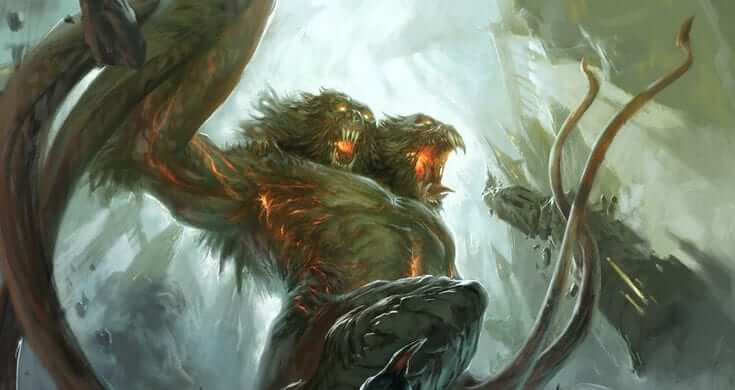
I own a few of the adventures and have used bits and pieces of some throughout my campaigns. My friends and I also played Out of the Abyss and that was so well-received that I’ve used some crowd favorite characters, setting info, and creatures in our other games. If you are looking for a gritty, survival adventure this is an excellent pick-up.
I regularly consult this book whenever I incorporate the Underdark in my games. It is an excellent setting guide full of creatures, setting descriptions, and anything else you could need to know about the Underdark in D&D 5e.
Princes of the Apocalypse
Princes of the Apocalypse was released early in 5e’s life cycle. Fortunately, it does not suffer the same fate as HotDQ and RoT though it can be a little rough around the edges. You may need to spend a little extra time outside of the sessions prepping compared to some of the later adventure modules.
The online supplement warrants some bonus points for PotA as it has all of the monsters and magic items used in the game. The DM could buy just PotA and use the supplement without needing to purchase the MM or DMG. If thwarting evil cults focused around elementals sounds cool, this may be the adventure for you!
Storm King’s Thunder
Storm King’s Thunder is about giants wreaking havoc on the Sword Coast. I have heard good things about this adventure. There is a lot of room for the DM to modify the adventure and story. There’s tons of interesting lore regarding the giants and the Sword Coast as well as plenty of rich role-playing hooks as well.
The cool thing about this adventure is that it’s nonlinear in the sense that you can swap the chapters of the adventure around entirely. If your players are one for enjoying sandboxes and going off the beaten trail (so to speak) then this is going to be a solid adventure to run without requiring much prep on your part to tailor it to your table’s playstyle.
The one criticism I have heard about this is that the maps in the Roll20 Version have an issue with scaling.
Tomb of Annihilation

Tomb of Annihilation is an adventure dealing with death and a mysterious disease. There is a time limit for part of the adventure that the party must adhere to concerning this disease.
Necromancy is a major theme in this adventure. It is another gritty story, but I have heard tons of praise for its writing. Oh, also, there are dinosaurs.
Waterdeep: Dragon Heist
Waterdeep: Dragon Heist is an urban adventure book with a heavy focus on role-playing in the city of Waterdeep. They’ll forge alliances with the different factions in the city and navigate their way through social interactions, bar fights, and the chaos of a city that’s devolving into crime.
At the beginning of the campaign, the group must choose what season it is in Waterdeep. This will determine which of the 4 villains the party must stop from stealing the treasure. Unlike other adventure books, the party’s goal is simply to stop the villain’s plans and not to kill them.
They’ll have to make good use of their relationships with NPCs, supplies they’ve acquired, and their wit and cunning. The party also gets a home base to use as they please giving them even more resources to use to thwart their villain.
The best part about WDH is its replayability. The same group could run through this adventure 4 times and have a completely different story each time. The book is highly regarded as a unique and well-written adventure for groups that enjoy role-playing and planning rather than a dungeon delve.
One glaring issue with WDH is that it requires considerably more prep time from the DM compared to other adventure modules to make the adventure work. There are so many options and a lot of paths that the players take are not neatly connected to the rest of the adventure.
Waterdeep: Dungeon of the Mad Mage
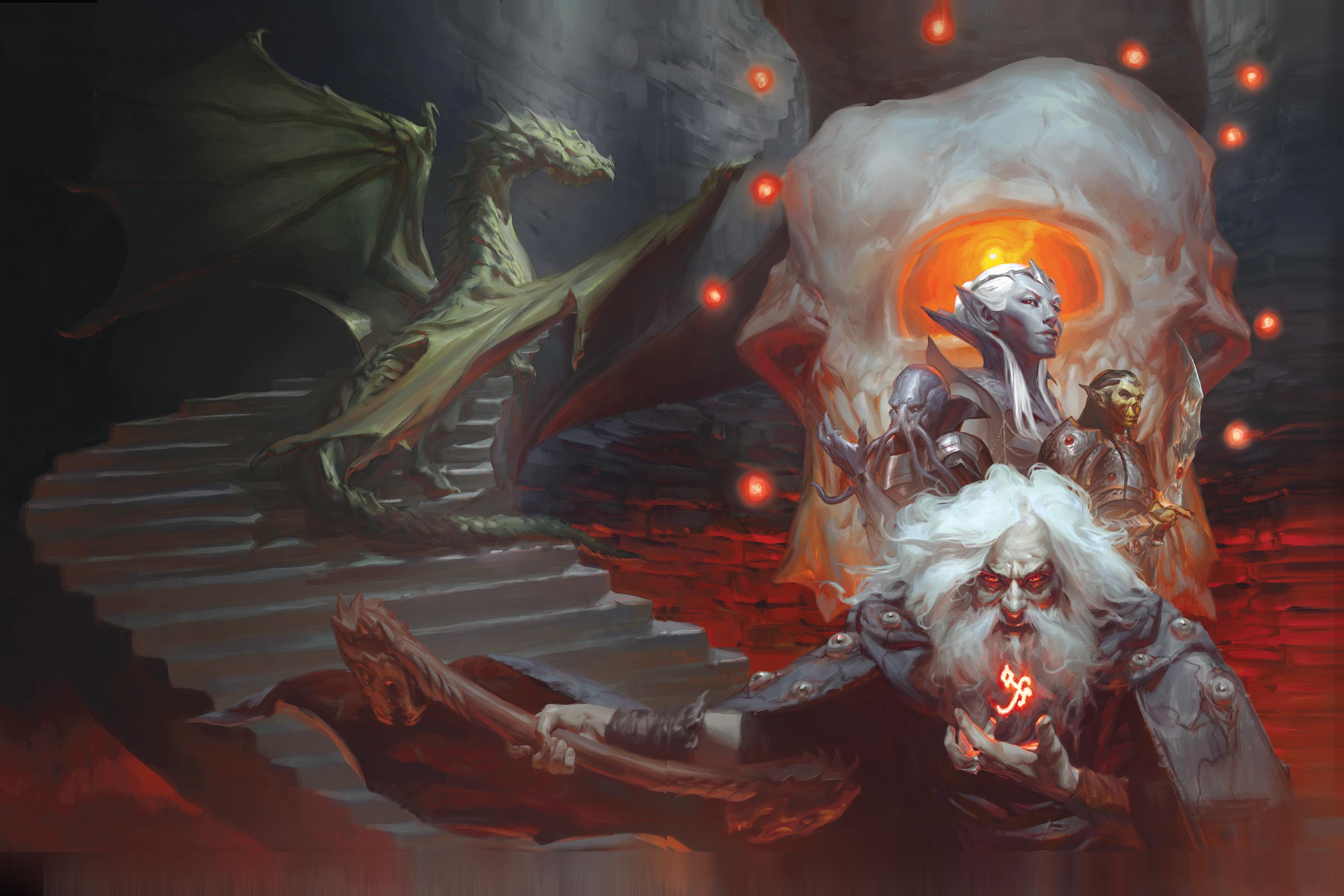
Thanks to the people at Roll20 I was able to get my hands on an early copy of their version of DMM and was able to take a look at it and play around with it. Needless to say, I was surprised at how much I like this module. It’s structured as a classic dungeon delve which is by far one of my favorite types of D&D adventures.
The module is made for 5th-level characters. Completing the module will cap them out at 20th level. There are 23 total levels of the dungeon and each one is suited for a specific level. This setup is excellent because it allows DMs to take a whole level of the dungeon out and place it in one of their games without much of an issue.
While Waterdeep: Dragon Heist is regarded as the prologue of Dungeon of the Mad Mage you don’t have to run it to have DMM make sense to you and your players. It’s its own story so you can either start fresh with 5th level characters or weave it into a different adventure that levels your party to 5th level.
If dungeon delves, fighting powerful creatures, the arcane, and defeating a powerful wizard sound interesting this is the adventure module for you!
The Wild Beyond the Witchlight
The Wild Beyond the Witchlight is an adventure module that’ll take the party from level 1 to 8 as they explore a mysterious gateway into the Feywild, the Witchlight Carnival!
The bold claim of this adventure being designed in a way that the party could complete it without resorting to combat certainly rang true. However, I think WotC overcompensated in this regard.
The script is flipped. Combat is an option, but it’s rarely the first or the most obvious option.
If you intend to run this module with a regular group, be upfront with them about the unique expectations of the module. Not every table will enjoy this playstyle for 5e, but those that do will surely have a fantastic time.
Oh, also, I’m a big fan of the new harengon race. The Feywild player options are really cool, but it’s not enough to justify the purchase alone.
Box Sets
The Starter Set
The starter set is an excellent pickup for a group of first-time players. It includes a small book full of rules and character creation choices for levels 1-5, dice, and an adventure. It’s an affordable option for new players given how much value is included. If you’re on the fence about trying D&D, I’d grab this before the Player’s Handbook.
The Lost Mines of Phandelvr is the adventure, and it’s a phenomenal one. I have heard nothing but praise for this edition’s starter set and even popular shows such as The Adventure Zone have used this adventure as a starting point for their campaigns.
D&D Essentials Kit
Essentially, the D&D Essentials Kit contains an abridged book of rules to get your group started, a guide to character creation, dice, and other items to aid in learning the game. NewbieDM showed off some of the magical items and quest cards that are included in the box set.
A new adventure, Dragon of Icespire Peak, is also included in the set and will take your party through levels 1-6. This adventure can be played entirely alongside The Lost Mines of Phandelvr from The Starter Set, so don’t feel like The Starter Set will no longer be useful!
While there are rules for running a single-player adventure, these rules are simply utilizing a revised version of the Sidekicks UA. If you’re looking for a fleshed-out single-player ruleset, this probably won’t satisfy your cravings.
All in all, it’s worth a pickup for new groups. It’s an affordable cost and comes with quite literally everything you’d need to play D&D with a group of friends.
Conclusion
Do remember that this is an opinion piece. Feel free to buy whatever books you like. I will always say to grab the PHB before you look at anything else. I will also be updating this list as new books are added to the D&D 5e book list so feel free to check back later or voice your opinions on my picks!
If this post was helpful to you, be sure to check out the rest of my reviews here!


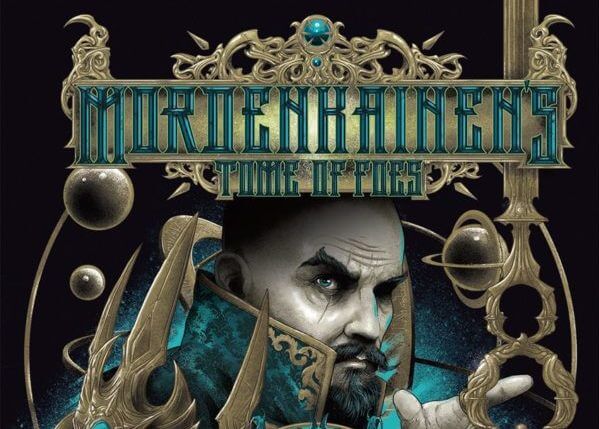

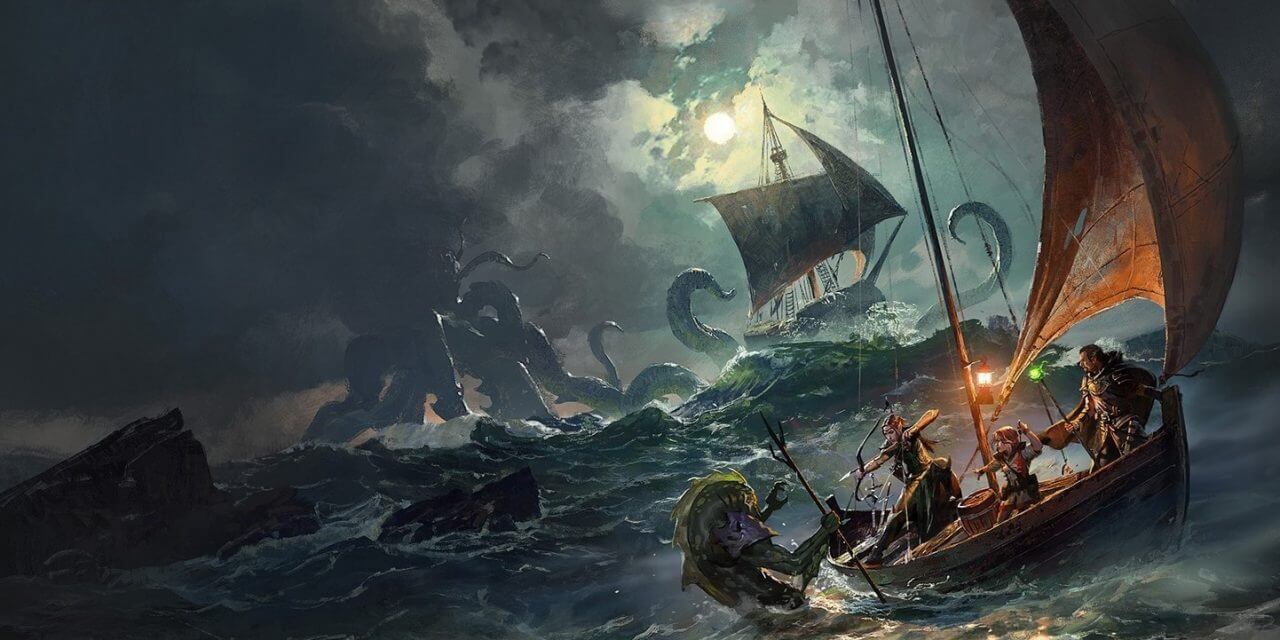
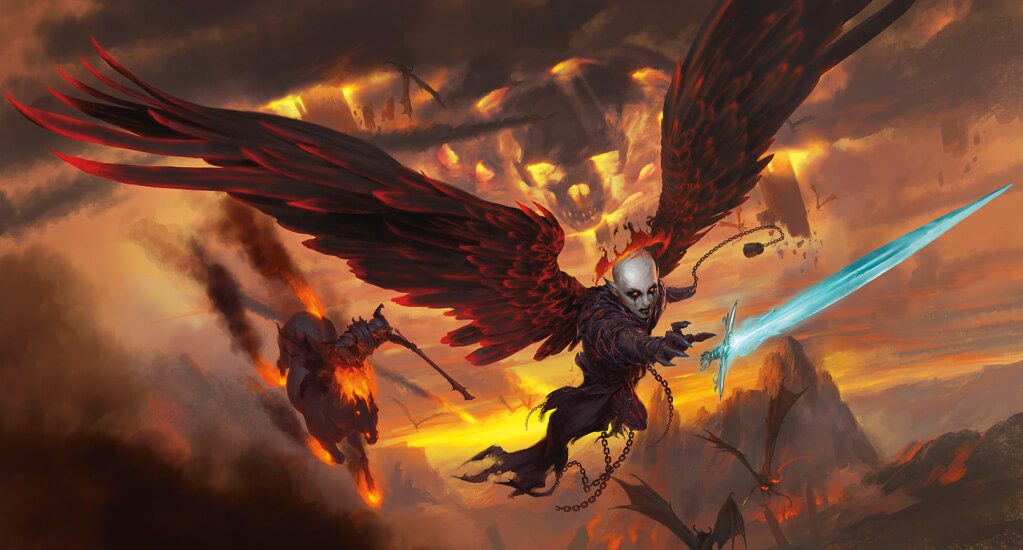
pretty good list i can agree with most of it. the PHB is definitely the most important thing ofc. as a full time player i was on the fence on a couple of the books that is currently in my inventory like sword coast tome of foes and volo’s guide, tho i will probably get XGTE soon but will wait till the rest of the base stuff is on sale maybe.
Xanathar’s is a blast for sure! Amazon has sales for the books pretty frequently so be sure to keep that on your radar.
I think D&D Essentials will be supplementary to the Start Set (especially since it’s going to have a sequel to Lost Mines), more aimed at new DMs.
Honestly this sounds about right! The inclusion of the item and quest cards seems to point to that.
This is extremely helpful and insightful. Thanks for doing this. I’m an old school player from long ago now working on 5e stuff, so this helps!
My pleasure! I know the feeling, especially now that there are so many books to choose from!
I appreciate you making this list and explaining why certain books are in which tiers, it’s really helped me get a good idea of where to start, and where to expand to. I have only recently been getting back to tabletop RPGs, having not played them in nearly twenty years (as I recall I only ever played Palladium and Rifts back then), and I started back in with PTU (which was easy, due to it being free and including all books with supplements and such pre-sorted), but thought I’d try a traditional fantasy game, too, only to find myself overwhelmed with the number of DnD books with no clear way to tell where to start.
Anyway, thanks again for the list. Made things far easier to understand.